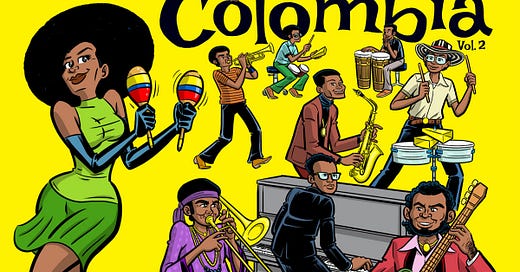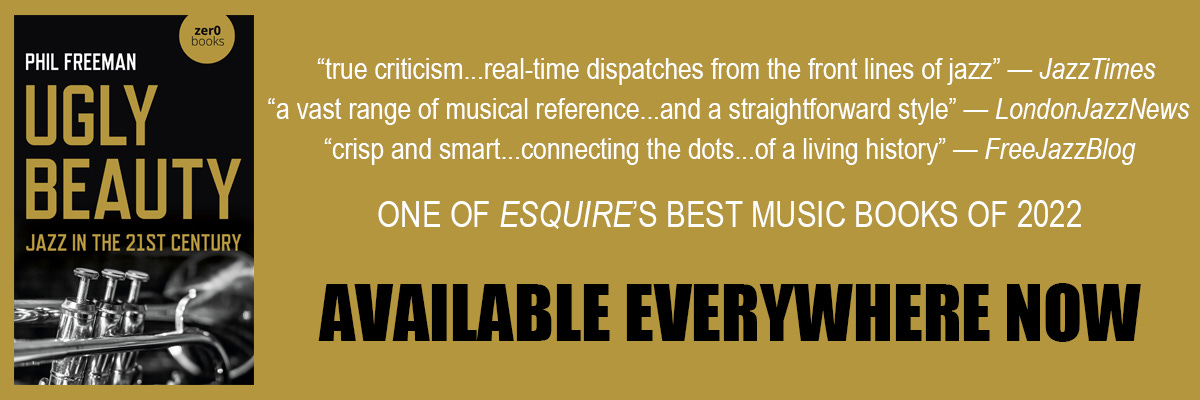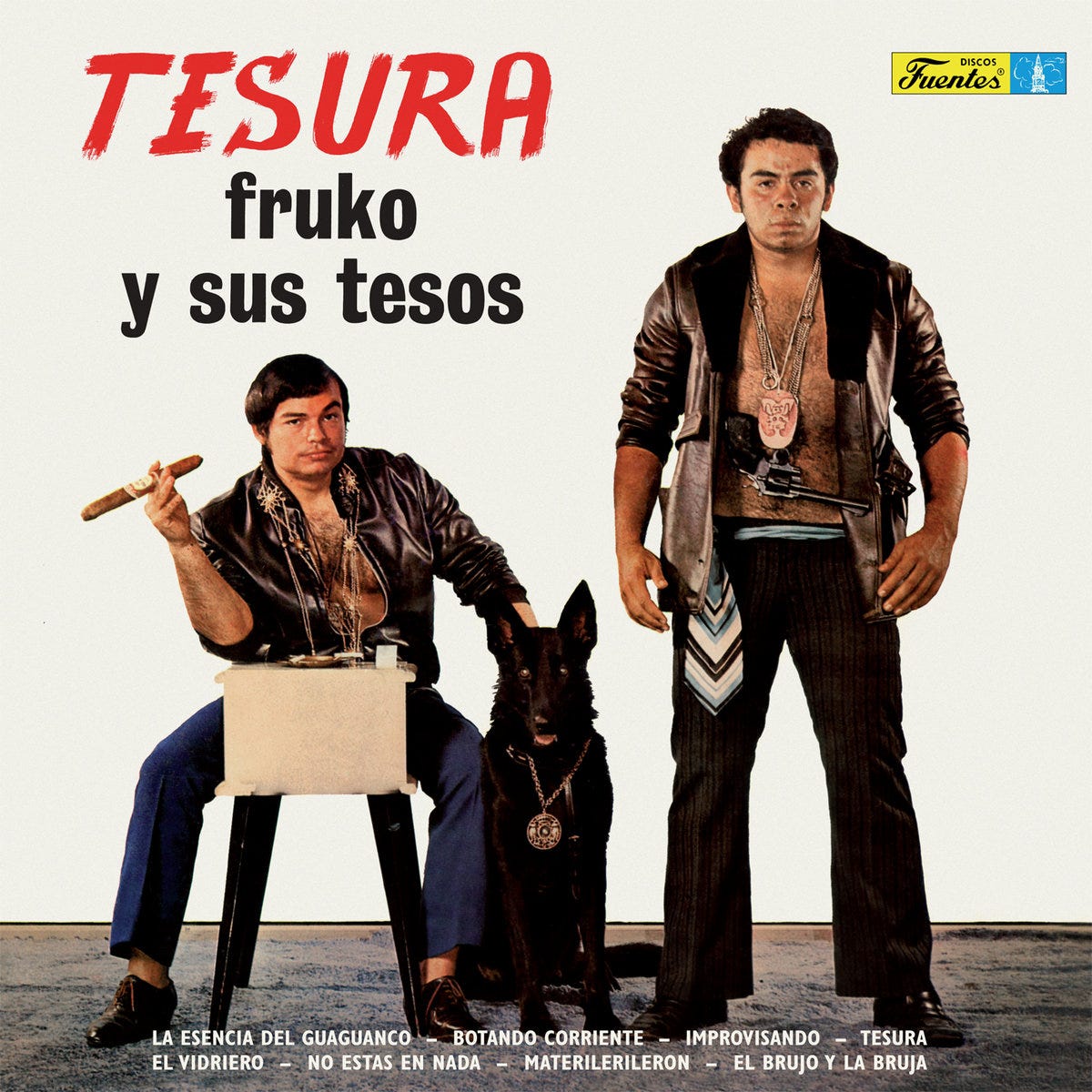Do your listening habits change with the weather? Mine do. Setting aside the fact that professional responsibilities require me to listen to dozens of new jazz albums every month, there are certain types of music I listen to in the winter, and others I pull out in the summer. Some are obvious: when it gets hot, I listen to more reggae and dub (Burning Spear’s first five or six albums, Creation Rebel, African Head Charge, Dub Syndicate, and the Skatalites are perennial favorites, but the new Horace Andy album is amazing), King Sunny Ade, and salsa from the late ’60s to mid ’70s (Ismael Rivera, Willie Colón, Eddie Palmieri, and Roberto Roena y Su Apollo Sound are my go-tos). But even my tastes in metal shift with the temperature. In winter, I’m more drawn to biker doom (the Obsessed, Spirit Caravan), floor-punching death metal (Cannibal Corpse, Incantation, Immolation, Vader, Lost Soul) and house-flattening riffs in general (High On Fire, Triptykon). When things heat up, though, I start listening to more grind and thrash (and Pantera’s Reinventing the Steel), so the fact that new Kreator and Wormrot and Antigama albums are imminent is very pleasing to me. In cold weather, I prefer ’90s East Coast rap (Wu-Tang Clan, Gang Starr, Jeru the Damaja, Mobb Deep, M.O.P.); in hot weather, I start listening to UGK.
Anyway, the weather’s just starting to heat up where I am, and I’ve found a new summer soundtrack: Afrosound.
“Afrosound” is a loose umbrella term for a variety of related musical styles all happening in Colombia by the late ’60s but really getting going in the mid ’70s and continuing into the early ’80s. It’s hard to pin down exactly, but once you hear it, you might become as obsessed as me.
Some people claim that this music —which did not carry that name at the time, as I’ll explain below — was in part a response to the chicha sound coming out of Peru and Bolivia. Chicha was a sort of psychedelic, fuzzed-out cumbia with lots of guitar; it’s a fun but limited sound. (There are a lot of chicha compilations, and even some retro acts playing the style; start here and here.) The real catalyst, though, was the musical and cultural environment of Colombia itself, particularly the country’s northwest coastal region and the port city of Barranquilla.
This was a place where tropical and indigenous sounds mixed with imported music from Africa and the latest electric instruments and, in the cultural hothouse environment of the mid ’60s, began to crossbreed and explode into brand-new styles that also incorporated elements of rock ’n’ roll, funk, soul, and even jazz. Much like Puerto Rican and Cuban immigrants combined their traditional rhythms and styles with the sounds of late ’50s and ’60s New York, creating a kind of hot-sidewalk Latin R&B called bugalu, which eventually became salsa, Colombian artists took everything and threw it in the pot, creating a kind of sonic sancocho that throbbed with life.
The biggest and most important record label in Colombia is Discos Fuentes, founded in the 1930s. For quite a few years now, they’ve been licensing music from their vast archives to labels like Soundway, Analog Africa and Vampisoul. There are a slew of absolutely killer compilations of this ’60s, ’70s and ’80s material, including Colombia! The Golden Age of Discos Fuentes 1960-76; Palenque Palenque: Champeta Criolla & Afro Roots in Colombia 1975-91; Diablos Del Ritmo: The Colombian Melting Pot 1960-1985; and the three that inspired this journey I’m currently on — The Afrosound of Colombia Vol. 1; The Afrosound of Colombia Vol. 2; and Big Box of Afrosound.
There are a variety of styles and approaches spread across these compilations — add ’em all up and it’s close to 200 songs, so variety should be expected — ranging from hard-charging salsa that could easily compete with anything coming from the Fania Records NY/PR axis, to grimy bugalu with sometimes shocking garage-rock elements (massively distorted bass, face-stabbing electric organ solos), to updates of more traditionally Colombian styles that incorporate the accordion and/or the tootling clarinet of the country’s coast. But what sets this stuff apart from Latin music of the northern hemisphere is its importation of West African sounds, from certain rhythm patterns to the trademark chiming guitars. That’s what turns it into a truly diasporic sound, and gives it the thrilling energy that only music that’s genuinely creating something new, in the moment, possesses.
A startling amount of this music is directly traceable to one man: Julio Ernesto Estrada Rincón, better known as Fruko. A multi-instrumentalist who often focused on bass, Fruko got his start as a studio musician for Discos Fuentes when he was still a teenager. He joined Lisandro Meza’s cumbia group, Los Corraleros de Majagual, and traveled to New York with them in 1968, where salsa was just getting going (Willie Colón’s debut album, El Malo, was released in 1967). Back in Colombia, he formed his own group, Fruko y Sus Tesos; their debut, Tesura (translation: “smoothness”), exploded like a bomb in 1969. Wrapped in maybe the hardest cover art in Latin music history (Fruko’s the one standing, with the gun around his neck), it was as close as salsa got to punk rock, with pounding African-derived rhythms, blaring horns playing surprisingly slick charts, and that garage-rock bugalu feel I described above.
(Just a side note: Tesura’s cover wasn’t a one-off in terms of startling visuals; the second Fruko y Sus Tesos album, 1971’s A La Memoria del Muerto, features a photo of Rincón shooting up in a graveyard.)
The longtime vocalist for Fruko y Sus Tesos was Joe Arroyo, an absolute legend in Caribbean music. He stayed with the band from 1971 to 1981, writing many of their classic songs and frequently addressing social and racial issues in his lyrics; the two were a partnership the equal of Willie Colón and Rubén Blades, until the singer went solo with a new band he called La Verdad. Arroyo died in 2011; there’s a statue of him in Barranquilla.
Fruko wasn’t content just leading his own band, either. He was also the mastermind behind three more Discos Fuentes projects: The Latin Brothers, Wganda Kenya, and Afrosound. (The Vampisoul folks took the Afrosound name and retroactively invented a genre, you see.)
The Latin Brothers were a relatively straightforward salsa act, somewhat slicker and less adventurous than the Tesos, with multiple vocalists including Piper “Pimienta” Diaz, John Jairo, Victor Meléndez, and Arroyo. Fruko’s arrangements for them often featured flute and violin a la Johnny Pacheco, in addition to the piano, horns and percussion. They’re good, but pretty mainstream and obviously intended to have hit records without startling the listener.
[bandcamp width=100% height=120 album=2718918607 size=large bgcol=ffffff linkcol=0687f5 tracklist=false artwork=small track=2818343237]
Wganda Kenya and Afrosound are much more interesting. They seem to have been studio-only projects, and allowed Fruko to experiment with all kinds of sounds, in any combination that occurred to him. Check out Afrosound’s “Jungle Fever,” which features Afrobeat-style electric guitar and stabbing organ, moaning female vocals, a horn so distorted it sounds like a foghorn, and toward the end of the track, a xylophone solo. Or “Una Abeja en el Semáforo,” a distorted Afro-rock groove as fierce as Ofo the Black Company’s “Allah Wakbarr” or Moussa Doumbia’s “Keleya.”
[bandcamp width=100% height=120 album=4126612645 size=large bgcol=ffffff linkcol=0687f5 tracklist=false artwork=small track=1642851456]
Wganda Kenya’s music makes Afrosound’s seem conventional by comparison. One of their gimmicks was to cover a song in completely warped fashion; “Combate a Kung Fu” is, yes, a cover of Carl Douglas’s “Kung Fu Fighting,” but stripped of all but the background vocals (the chanting and the “huh!” outbursts), and the main melody line is handled by a hyper-distorted keyboard, with wah-wah guitar and flute added. But one of their most amazing tracks is the nearly eight-minute “Shakalaodé,” which is, I’m not kidding, a version of Fela Kuti’s “Shakara,” sarcastic female chorus and all. Listening to it, I can’t tell if the lyrics are delivered in Yoruba filtered through an incomprehensible Colombian accent, or if they’ve been translated into Spanish, or if it’s some kind of nonsensical new language, like Adriano Celentano’s “Prisencolinensinainciusol.” But it fucking rips.
All of the compilations I listed above — Colombia! The Golden Age of Discos Fuentes 1960-76; Palenque Palenque: Champeta Criolla & Afro Roots in Colombia 1975-91; Diablos Del Ritmo: The Colombian Melting Pot 1960-1985; The Afrosound of Colombia Vol. 1; The Afrosound of Colombia Vol. 2; and Big Box of Afrosound — are ideal hot weather music, a seemingly bottomless well of amazing, mind-frying Latin grooves. Shit, I haven’t even mentioned the non-Fruko projects; Machuca Cumbia’s version of “Staying Alive” (yes, the Bee Gees song) is the kind of thing nothing can prepare you for; you just have to hear it for yourself. Hie thee forth to Bandcamp and dive in. You won’t be sorry.
That’s it for now; see you next week!







In the late 80's, I found a cutout of Joe Arroyo's Greatest Hits on Fuentes. At the time I did not know who he was but when I played the cd! I had a friend who used to work for Stern's in NYC and he used to send me lots of free cd's. I was told by a Colombian that Fruko was a brand of chewing gum. The Latin Brothers, Pacho Galán, Lucho Bermudez and so many others. I like your taste in music. May I recommend Paulo Flores from Angola. I think that you might enjoy his music.